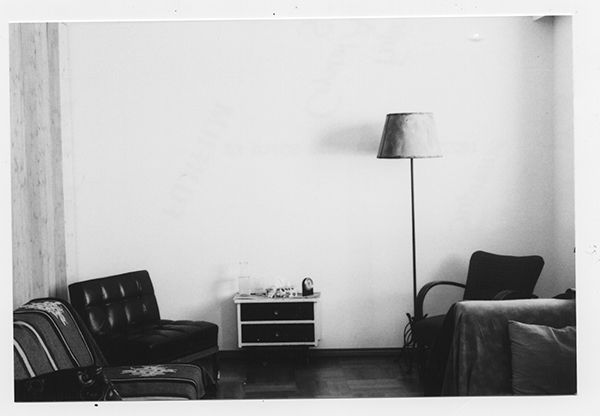 |
Psychoanalytical Praxis
|
| Not like the brazen giant of Greek fame, With conquering limbs astride from land to land; Here at our sea-washed, sunset gates shall stand A mighty woman with a torch, whose flame Is the imprisoned lightning, and her name Mother of Exiles. From her beacon-hand Glows world-wide welcome; her mild eyes command The air-bridged harbor that twin cities frame. "Keep, ancient lands, your storied pomp!" cries she With silent lips. "Give me your tired, your poor, Your huddled masses yearning to breathe free, The wretched refuse of your teeming shore. Send these, the homeless, tempest-tost to me, I lift my lamp beside the golden door !" |
[CLICK HERE FOR ESSAYS AND TEXTS]>>>>>>>
<<<<<<<<[CLICK HERE FOR SITE HOME]
[CLICK HERE FOR ESSAYS AND TEXTS]>>>>>>>>>>>>>
About me |
|
Born in 1975 in Budapest, schooled in Vienna, studied and trained as an architect in Vienna, Rotterdam, and New York. Engaged in academic teaching at SUNY Buffalo New York and at the Academy of Fine Arts Vienna. Received the State Prize for Architecture in the category of Experimental Trends in Architecture. Studied at the Sigmund Freud University Vienna, and underwent psychoanalytic training at the Psychoanalytic Seminar Innsbruck. What I have learned in my work, in my travels, is that the human soul is more than the sum of its biological parts. Each individual biography represents a universe of its own and must be approached and delicately explored with curiosity, openness, and impartiality. While there are societal conventions, categories, norms, and perhaps models we have developed and need for communication, the psychological phenomena, between happiness and suffering, which unfold to a therapist in their work, can never be sufficiently captured and described by these. They require, in addition to professional precision, knowledge of the tools, their application, and their limitations, above all, intuition and openness. The development of expressive forms of expression, understanding formal, structural, and social relationships, creative approaches to coping with challenges, crises, and developmental bottlenecks, the interaction of conscious and unconscious motivations, as well as intuitive, associative, and categorical thinking and experiential processes are influences that have shaped me in my work as an architect and also flow into my work as a psychotherapist. To practice psychotherapy, to practice soul healing, means to me to take responsibility for the development of the other. It is work that involves a division of roles, but can only be carried out together. However, this means developing a passion, sharing it, helping to carry it over sometimes difficult terrain, not to fall out of the role, and yet to remain true to both professional and personal standards, to face the truth and not become a side effect in the end. I enjoy drawing, I enjoy writing, I still build whenever the opportunity arises, I research, explore, try to encounter the diversity and beauty of life day by day, try not to deny the difficulties, but also find an appropriate place for them. There are three languages in which I am proficient enough to offer therapy. First, there is German, the beautiful and eerie German language with its wonderful chains of associations, then English, the medium of choice for communication between the nearer continental and intercontinental hemispheres, with its pointed and lively expressions and playful variations, and then there is Hungarian, the mysterious and flowery language of my ancestors. |
<<<<<<<<[CLICK HERE FOR SITE HOME]
LANDING PAGES |
|
The praxis Coaching Supervision |
|
|
<<<<<<<<[CLICK HERE FOR SITE HOME]
[CLICK HERE FOR SITE HOME]>>>>>>>
[CLICK FOR SITE INFO & IMPRESSUM].........